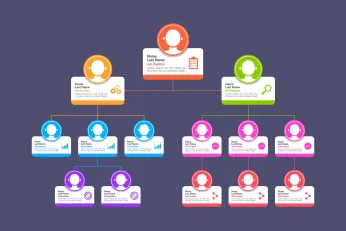Formación en ventas: Importancia, tipos, mejores prácticas y casos de éxito
Effective sales training enhances skills, boosts performance, and drives revenue growth. This guide covers its evolution, best practices, challenges, and success stories. Learn how personalized coaching, AI-driven insights, and gamification can transform your sales team’s effectiveness.
En esta página
La formación en ventas es esencial para cualquiera que quiera tener éxito en el competitivo y dinámico campo de las ventas. Es el alma de cualquier empresa. Sin ventas, no hay ingresos, crecimiento ni satisfacción del cliente.
Sin embargo, las ventas no consisten únicamente en ofrecer productos o servicios a quien quiera escucharlos. Se trata más bien de establecer relaciones, comprender las necesidades y ofrecer soluciones que creen valor para ambas partes.
Desarrollar las habilidades, los conocimientos y la mentalidad que le ayudarán a convertirse en un vendedor seguro de sí mismo son cualidades que puede inculcar a través de un programa de formación en ventas.
Tanto si es nuevo en el mundo de las ventas como si es un profesional con experiencia, la formación en ventas puede ayudarle de las siguientes maneras.
- Dominar el arte de la comunicación, la persuasión y la negociación
- Manejar las objeciones, los rechazos y las quejas con elegancia y profesionalidad.
- Cierre más tratos y aumente su rendimiento comercial
- Haga crecer su red de contactos, referencias y repetición de negocios
- Adaptarse a la evolución de las expectativas de los clientes y las tendencias del mercado
En este artículo, analizaremos la evolución de la formación en ventas, la importancia de los programas de formación en ventas y casos prácticos.
Evolución de la formación en ventas
A medida que avanzamos en el tiempo, hemos sido testigos de un cambio significativo en los mecanismos de formación en ventas. Viajemos a través del tiempo para comprender cómo ha cambiado y qué nos depara el futuro.
1. Los primeros días - enfoque centrado en el producto
En la fase inicial de la formación en ventas, la atención se centraba principalmente en el producto. Se formaba a los vendedores para que conocieran a fondo el producto que vendían. Esto incluía el conocimiento de las características del producto, sus ventajas y su comparación con la competencia.
La idea era que un vendedor con un conocimiento superior del producto podía convencer a los clientes del valor del producto y realizar una venta.
2. El cambio: enfoque centrado en el cliente
A medida que los mercados se saturaban y se volvían más competitivos, las empresas se daban cuenta de que necesitaban algo más que un producto. Había que tener claros a los clientes. Así, la formación en ventas se orientó hacia la comprensión de las necesidades, preferencias y puntos débiles de los clientes.
Se impartió una formación adecuada para formular las preguntas correctas a fin de descubrir estas necesidades, lo que ayudó a adaptar los argumentos de venta en consecuencia. Esta técnica de formación en ventas es más consultiva y habla de construir relaciones con los clientes.
3. El auge de la tecnología: formación digital en ventas
The advent of the Internet and digital technologies brought yet another shift in sales training. Traditional classroom-based training was supplemented with online courses, webinars, and virtual simulations, enhancing flexible and personalized learning experiences. If you want to delve deeper, you can check out DataCamp review for comprehensive insights into their data science courses.
Ahora los vendedores pueden aprender a su propio ritmo y las empresas pueden impartir formación a una fuerza de ventas dispersa geográficamente.
4. El presente: formación en ventas basada en datos
Hoy en día, la formación en ventas se basa cada vez más en los datos. Las empresas utilizan la IA y el aprendizaje automático para ayudar a analizar grandes cantidades de datos procedentes de diversas fuentes, como los sistemas CRM, las redes sociales y los comentarios de los clientes.
Para proporcionar formación y comentarios personalizados, estos datos se utilizan en gran medida para identificar patrones y tendencias variados. Por ejemplo, si a un vendedor le cuesta cerrar tratos, el sistema puede sugerirle módulos de formación específicos basados en vendedores similares que hayan tenido éxito.
5. El futuro: aprendizaje y adaptación continuos
The future of sales training is likely to be characterized by continuous learning and adaptation. As markets evolve, salespeople must constantly update their skills and knowledge. This might involve learning about new technologies, sales methodologies, or customer behaviors. Companies must provide ongoing training and support to help their sales teams adapt and succeed.
Different types of sales training programs
Sales training programs come in various formats, each designed to enhance specific skills. Choosing the right one depends on your team's needs, industry, and sales goals. Here are some common types of sales training programs:
1. Primary sales skill training
Todos los empleados del personal de ventas deben conocer el poder de las habilidades básicas de venta para convertir posibles clientes potenciales en compradores. Los aprendices deben mejorar su capacidad de escucha e interacción para crecer en esta profesión. Las ventas requieren mucha paciencia, ya que los clientes potenciales pueden ser difíciles de tratar.
El director de ventas puede concentrarse en impartir trucos y consejos probados, teniendo en cuenta las tendencias y situaciones recientes del mercado. No hay un plazo determinado en el que un vendedor pueda considerarse un experto, porque la versatilidad es la clave del éxito en este panorama en constante evolución.
Hubspot Academy provides a free online sales program focusing on Inbound sales methodology and identifying potential buyers, targeting salespeople, sales managers, and inbound marketers.
2. Seller differentiation training
This is the second type of training that will motivate your employee to handle clients and questions like "how customers should go for your product?" This training has many approaches and depends entirely on the organization.
However, this training type will augment an employee's negotiation abilities. This sales training will make your employees self-reliant and will also help to sustain in a rough market.
3. Market creation training
If your organization receives huge demand, this training type is not for you. The organization with latent demand can use this training type to elevate sales and productivity.
For example, if your organization has a new commodity, you will require market creation in the sales program. The salesforce should be prepared with the basic market skills to sell the new product. The training process is not loose as there is no rule book, so the execution depends on the individual.
4. Motivation based training for crunch situation
This type of sales training program is used quite often in B2B type of markets. Here, the sales reps are provided a series of lectures to get them all pepped to go beyond the targets. Here, you can witness the use of cliche quotes to fire up the enthusiasm factor.
Quotes like “if you are not taking care of customers, your competitors will’ are commonly thrown around. The effect of such a type of training program is short-lived, and so it is strategically used to get the best out of the employees during the make-or-break situation.
5. Credibility and trust-based selling program
These types of sales training programs mainly focus on improving crucial field sales skills of the sales rep. Ensuring that the company's agents carry the company's brand with integrity while selling the products. Such training programs deal with improving the client-handling skills of sales reps.
Trying to make sure that the agents stay away from gimmicky stunts and focus on communicating the product's real value. You need to understand that, It is hard to build customer rapport, and a slight mishap can spin the trust factor for a toss.
Importance of sales training program
According to research by Sales Performance International, sales training can help scale sales performance by 20%, proving that a sales training program can come in handy to reach targets.
Teniendo en cuenta estas estadísticas, los programas personalizados de formación en ventas resultan cruciales por las razones que se exponen a continuación:
1. Estilos individuales de aprendizaje
Cada vendedor tiene un estilo de aprendizaje único. Los programas de formación personalizados pueden atender a estas preferencias individuales, mejorando la experiencia de aprendizaje y haciéndola más eficaz.
2. 2. Nivel de competencia
According to Forbes magazine, 55% of salespeople lack quality sales skills. Reducing this percentage requires a well-crafted sales training program. A customized program allows quality training to the individual’s current level, ensuring they are neither overwhelmed nor under-challenged.
3. Lagunas de conocimiento específicas
La formación personalizada puede abordar áreas específicas en las que un vendedor puede necesitar más conocimientos o confianza. Este enfoque específico puede dar lugar a mejoras significativas en el rendimiento.
4. Relevancia
La formación personalizada puede diseñarse para que sea muy pertinente para los productos o servicios que vende el vendedor y el mercado en el que opera. Esto aumenta la aplicabilidad de la formación al trabajo diario del vendedor.
5. Motivación y compromiso
Es probable que los vendedores estén más comprometidos y motivados cuando la formación esté directamente relacionada con sus necesidades y su trabajo. Esto puede conducir a una mayor retención de la información y a una participación más entusiasta.
6. Rendimiento y productividad
En última instancia, los programas personalizados de formación en ventas pueden mejorar el rendimiento y la productividad, ya que los vendedores disponen de las habilidades y los conocimientos que repercuten directamente en su éxito de ventas.
How to evaluate sales training programs
Este mercado ya no es un asunto de monopolio, y lo mismo ocurre con los programas eficaces de formación en ventas. Dado que a menudo resulta un poco difícil elegir el mejor programa, las organizaciones deben conocer brevemente el presupuesto, la duración del equipo, el objetivo y las necesidades antes de decantarse por uno.
He aquí algunos puntos que pueden ayudarle a conocer los fundamentos para elegir el mejor programa de formación en ventas.
1. Location
La ubicación desempeña un papel clave a la hora de seleccionar un programa de formación en ventas para empresas. El programa de formación puede impartirse por medios digitales o en persona. El formador dedica algunas sesiones a ofrecer breves conocimientos sobre ventas. Sin embargo, muchas personas siguen prefiriendo la formación presencial, ya que resulta más fácil para los alumnos asimilar todas las sugerencias. Así pues, hay que tener en cuenta el factor de la ubicación a nivel de ventas individuales para decidir qué medio se adapta mejor a las necesidades de su organización.
Most of the sales program training is done online, and after COVID19, online seems to be the way to go. You can choose various free and paid online sales training programs from platforms like Linkedin and Skillshare.
Companies that shift to online sales training programs recoup 30 to 70 percent on traveling.
Muchas empresas se decantan por las clases en línea porque pueden formar a tantas personas como deseen en un tiempo limitado. Hay que prestar atención al hecho de que la formación presencial se limita en la mayoría de los casos a 20 personas y consume mucho tiempo y recursos.
Programas en línea: Fundamentos de Gestión de Ventas (Linkedin), Masterclass de Formación en Ventas (Skillshare) y Formación en Ventas: Técnicas Prácticas de Venta.
2. Size
It would be best if you choose programs that can fit into your team's routine as well as yours to avoid consequences. Sales training programs are often short, but individuals or organizations may even choose ones with a long course duration. This makes in-depth training possible.
As a thumb rule, large corporate entities would not have many problems bearing the expense of longer training for their employees. If you run large entries and feel the need to include a training program that provides complete sales training, you can choose Double-Digit Sales. Also, if you have a startup, you can choose Altisales.
3. Objective
The purpose of choosing a sales training program is integral to the appointment process. In simpler words, the objective should be questioned - does your sales team face any challenges in dealing with sales procedures? Sales training is managed by organizations in two major situations - either at the time of onboarding or for employees who fail to achieve the given targets.
For instance, if you need to streamline sales and work on business development, then for meeting such objectives, you can choose Customer Centric Selling. Several companies want their employees to learn the tactics asap. Fast learning can make your salesforce less efficient.
4. Budget
Set a budget based on your revenue goal. Critically examine whether the program's price returns at least five times its actual price (a general thumb rule). A company gains $4.53 in return for a dollar invested in the training program. The whole ROI sums up to 353%. Do not choose a program that cannot help you garner a higher return on investment.
To set the context, if you are a part of a thriving startup, then choosing a training partner like Corporate Visions will only stretch the budget even thinner. Thus, finding a training solution with a higher ROI is important.
According to an account from Bersin by Deloitte, the year over year shift in training expenses has not only recovered but also doubled up by 7% in 2006 and 15% in 2013. Small scale enterprises can also change their sales training budget as per last year's ROI.
5. Targeted audience
Asegúrese de que el programa de formación incorpora conceptos y estrategias relevantes para el sector, el mercado y la posición que ocupa su empresa. La formación en ventas extrínseca no dará resultados positivos. Una de las formas más fáciles de entender esto es comprender los puntos finales de la forma B2B y B2C de operar en el mercado.
En la modalidad B2B, el destinatario final es un cliente empresarial, que a su vez presta servicios. Ahora bien, en el caso del B2C, el destinatario final es el propio consumidor. Por lo tanto, se requieren diferentes formas de formación en ventas para tratar con diferentes públicos. Para un negocio de forma B2B, se puede optar por IMPAX, mientras que para B2C, se puede ir a Customer Centric Selling.
Some statistics to help you consider top sales training programs
- Almost 90% of the buyers say that they want the involvement of a salesman from the initial stage.
- 27% of companies do not organize any sales training programs.
- 26% of the representatives state that they are not benefited from the training program.
- The companies which have dedicated sales enablement function enhanced their training efficacy by 29%.
- More than 60% of companies accept an idiomatic approach to sales training.
- 79% of business prospects state that it is very important to have a salesman in the purchase process.
- 60% of the employees are quitting the sales department because of a bad manager.
- Only 15% of sales managers admit that their companies have provided perfect sales training.
Sinopsis de la formación en ventas basada en datos
Using data and analytics to inform, guide, and optimize sales training programs blends into data-driven sales training. This approach leverages various data types to gain insights into sales teams' performance, identify improvement areas, and tailor training initiatives to address specific needs.
The goal is to make sales training more targeted, efficient, and aligned with sales professionals' challenges and opportunities.
1. Formación de comerciales
En un enfoque de formación en ventas basado en datos, los representantes de ventas reciben formación para comprender e interpretar diversos indicadores de rendimiento. Aprenden a analizar los datos y a utilizarlos para tomar decisiones con conocimiento de causa, ayudando a obtener claridad sobre las tendencias de ventas, el comportamiento de los clientes y la dinámica del mercado. El objetivo es dotar a los comerciales de las habilidades necesarias para utilizar los datos con eficacia en sus estrategias de ventas.
2. Comprender el recorrido del cliente
La formación en ventas basada en datos también implica un conocimiento profundo del recorrido del cliente. Esto significa analizar los datos en cada etapa de la interacción del cliente con la empresa, desde el primer punto de contacto hasta la compra final y más allá.
Al comprender las necesidades y el comportamiento del cliente en cada etapa, el equipo de ventas puede adaptar su enfoque para satisfacer estas necesidades y, en última instancia, impulsar las ventas.
3. Evaluar el proceso de venta
Otro aspecto importante de la formación en ventas basada en datos es la evaluación del propio proceso de ventas. Esto implica analizar diversas métricas, como el crecimiento de las ventas, la tasa de conversión de clientes potenciales, la tasa de ventas directas y las ventas por repercusión. Estos datos pueden ayudar a identificar los puntos fuertes y débiles del proceso de ventas y a poner de relieve las áreas de mejora.
4. Creación de un libro de jugadas
A partir de la información obtenida de los datos, se crea un libro de jugadas. Este documento estratégico describe las mejores prácticas, técnicas y estrategias del equipo de ventas. Sirve de guía a los representantes de ventas y ayuda a aplicar eficazmente el enfoque basado en datos.
Retos y oportunidades de la formación en ventas
A medida que la formación en ventas adquiere mayor protagonismo en el mundo digital actual, encontrará ciertos obstáculos. Encontrar oportunidades de calidad en este viaje es el camino a seguir.
Abordemos primero los retos y luego pasemos a las oportunidades.
Retos de la formación en ventas
He aquí los retos de la formación en ventas.
1. Tiempo y recursos
Sales training requires a significant investment of time and resources. This includes the time spent by the salespeople in training, the time spent by trainers preparing and delivering the training, and the resources needed to develop training materials and facilitate training sessions.
This can be a significant challenge for organizations with limited resources or salespeople who are already stretched thin.
2. Compromiso
According to Spotio, 65% of employees feel that the learning opportunities in sales training positively impact their engagement, helping strengthen the possibility of converting leads into business.
Además, mantener el interés de los vendedores durante la formación puede llevar tiempo y esfuerzo. Esto es especialmente cierto si el material no es directamente relevante para su trabajo o si los métodos de formación deben ser más atractivos. Los vendedores suelen estar motivados por los resultados, por lo que la formación teórica o no aplicable inmediatamente puede no interesarles.
3. Retención
A recent survey shows 84% of sales personnel lose touch in their sales training process after 90 days. Lack of information retention is the cause of this problem. Complex sales techniques or concepts that require ongoing practice add more difficulty.
4. 4. Diferencias individuales
Cada vendedor tiene unos puntos fuertes, unos puntos débiles y unos estilos de aprendizaje únicos. Crear un programa de formación que atienda eficazmente a estas diferencias puede ser todo un reto. Requiere un profundo conocimiento de las necesidades de cada vendedor y la flexibilidad necesaria para adaptar el programa de formación en consecuencia.
5. Medición de la eficacia
Medir la eficacia de la formación en ventas puede llevar tiempo. Muchos factores, como las condiciones del mercado, la calidad del producto y el comportamiento de los clientes, pueden influir en los resultados de las ventas. Esto hace que sea difícil aislar el impacto de la formación y medir su eficacia.
Oportunidades de formación en ventas
El ROI de la formación en ventas alcanza el 353%.lo que representa una gran oportunidad para que las organizaciones obtengan mayores beneficios. Algunos de los principales aspectos positivos de la formación en ventas son los siguientes:
1. Improved performance;
Una formación eficaz en ventas puede mejorar el rendimiento comercial. Al dotar a los vendedores de las habilidades y conocimientos que necesitan para tener éxito, la formación puede ayudarles a cerrar más tratos, aumentar su volumen de ventas y generar más ingresos para la organización.
2. 2. Desarrollo profesional
La formación en ventas permite a los vendedores desarrollar sus habilidades y avanzar en sus carreras. Al participar en la formación, los vendedores pueden aprender nuevas técnicas, mejorar sus habilidades de venta y aumentar su conocimiento del mercado. El compromiso a largo plazo con la aplicación de programas eficaces de formación en ventas, como talleres y seminarios, ayuda a los equipos de ventas a obtener una ventaja competitiva.
3. 3. Mayor motivación
La formación en ventas puede aumentar la motivación proporcionando a los vendedores las herramientas que necesitan para tener éxito. Cuando los vendedores se sienten seguros de sus capacidades y equipados para alcanzar sus objetivos de ventas, es probable que estén más motivados y comprometidos con su trabajo.
4. Adaptabilidad
La formación en ventas puede ayudar a los vendedores a adaptarse a los cambios del mercado o de los productos o servicios de la organización. Al mantenerse al día de las últimas técnicas de venta y tendencias del mercado, los vendedores pueden adaptarse y responder mejor a los cambios en su entorno de venta.
5. 5. Trabajo en equipo
La formación en ventas puede fomentar un sentimiento de camaradería entre los vendedores, dando lugar a un equipo de ventas más cohesionado y eficaz. Al aprender y apoyarse mutuamente en su desarrollo, los vendedores pueden establecer relaciones sólidas y trabajar juntos con mayor eficacia para alcanzar sus objetivos de ventas.
Razones para aplicar la gamificación a la formación en ventas
A renowned software company, Autodesk, secured a 15% rise in conversions after successfully implementing a value-driven gamified sales training program. Considering this example, let’s delve further:
1. Promover una competencia sana
A los equipos de ventas les encanta la competición, tanto individual como interpersonal. Utilizar la gamificación, que incluye elementos de competición y recompensas, se ajusta al lenguaje existente con el que los representantes están familiarizados.
Compass is one of the best gamified-driven SaaS platforms that incentivize sales reps to scale performance and complete a particular sales training module. This platform offers better interactivity through leaderboards, helping offer a better workplace experience.
2. Mejora la retención de conocimientos
Las recompensas adicionales, aunque sean intangibles, pueden incentivar la mejora de la capacidad de escucha y observación. Cuando el alumno está atento, hay más probabilidades de que asimile eficazmente la información presentada.
3. Excelencia en la formación
A través de atractivos cuestionarios y juegos interactivos, la gamificación simplifica los conocimientos complejos en porciones del tamaño de un bocado. Este enfoque permite a los participantes captar la información con mayor eficacia cuando están concentrados. En consecuencia, es más probable que cada alumno destaque en las sesiones de formación y complete con éxito cada curso.
4. Captura los KPI clave
Numerosos sistemas de gamificación realizan un seguimiento de la participación y de las métricas de productividad estándar, como las finalizaciones, las puntuaciones de aprobación y los resultados de los cuestionarios. La medición directa de la eficacia de sus materiales de formación le permite realizar ajustes informados, optimizando los resultados para obtener mejores resultados.
Tips to incorporate top sales training program
La venta corporativa es un perfil de trabajo con un alto grado de desgaste, pero a veces puede resultar duro debido a los constantes fracasos. Sin embargo, el esfuerzo continuo y un enfoque adecuado de la formación son las claves del éxito en este sector. La idea que subyace a la formación es hacer que los ejecutivos sean competentes o tengan confianza social para garantizar una interacción empática.
Esto puede requerir nuevas incorporaciones a los programas de formación, sobre todo teniendo en cuenta que el desarrollo de la personalidad puede ser clave. Así que aquí tienes algunos consejos que pueden ayudar a tu empresa a crecer exponencialmente en un plazo limitado.
1. Start the training soon
Tras la contratación, iniciar el programa de formación en ventas ahorra mucho tiempo y dinero, especialmente si el ejecutivo es un recién llegado. De este modo, no se arriesga el tiempo en el que el vendedor en cuestión podría no dar ningún resultado y, al mismo tiempo, se incurre en el CTC.
Es posible que quieras que tu empleado empiece a contribuir lo antes posible, preferiblemente justo después del proceso de incorporación. Sin embargo, según el grupo Bridge, en 2018, un vendedor medio necesitó tres meses para rendir bien. Por lo tanto, ¡formación!
Mejore su manual de formación basándose en las tendencias del mercado, ya que ayudará a los empleados a desarrollar ciertas habilidades inmediatamente después de ser contratados. Según la mesa redonda de contratación, una buena estrategia de incorporación puede aumentar el rendimiento de las ventas en un 11,53 %.
2. One size does not fit all
A sales team comprises employees with unique abilities, so they don't need the same training. Some you may have a great personality but don’t have convincing skills, while others may know what to say but lag in social confidence.
Your star employees need to inculcate leadership qualities, while the other employees require listening and interaction skills. You can build a variety of modules and offer skill training based on individual ability. If you are investing in LMS, you will be allowed to stipulate learning for each individual.
3. Guiding or coaching approach
This approach is a proven practice in sales training and yields high ROI. All the leading companies spend maximum time coaching their employees to be perfect. Sales coaching and sales performance are related to each other.
However, not a lot of sales managers spend time coaching their employees. This happens because the approach is high touch, and the manager of a large team might not have the time to sit and plan the approach.
4. Soft skills are a must
Sus vendedores son los primeros contactos que un comprador tiene con su organización. Así que no solo trabajan para cerrar tratos, sino también para mantener buenas relaciones. Un nuevo estudio de LinkedIn sugiere que los clientes potenciales y los compradores se sienten atraídos por un producto cuando el vendedor entiende sus necesidades y sus puntos débiles.
Un buen servicio de atención al cliente consiste en ser agradable y conocer el producto que se comercializa. Los mejores ejecutivos de ventas escuchan los problemas de los clientes y les sugieren productos que tengan que ver con el problema. Construyen una relación basada en la confianza para que el cliente se quede con la organización.
Casos prácticos de formación en ventas
Para comprender la autenticidad de la formación en ventas, estudiemos dos organizaciones de renombre que han implantado programas de formación en ventas y han obtenido resultados reveladores.
1. Idemitsu Lubricantes América
Idemitsu Lubricants America es líder mundial en la fabricación de lubricantes, que mejora las habilidades de venta de los profesionales de ventas técnicas.
Requisito
- La empresa buscaba una solución de formación en ventas para desarrollar la unidad y un lenguaje de ventas común entre vendedores y directivos.
- Mantenga unido al equipo de ventas con un proceso y un lenguaje de ventas comunes.
- Garantizar que los expertos técnicos mantengan conversaciones comerciales estratégicas con clientes potenciales y clientes.
- Ayudar a los directores de ventas con las herramientas y habilidades necesarias para entrenar a los representantes de ventas de acuerdo con sus estilos de comportamiento y aprendizaje individual.
Solución
- The Brooks Group diseñó un programa de formación en ventas personalizado que se impartió con éxito al equipo de Idemitsu.
- Introdujo una herramienta llamada Brooks Talent Index assessments, que ayuda al cliente a ajustar el estilo de comunicación con los miembros del equipo y a contratar a los mejores talentos en ventas.
Resultados
- Aportó proceso y organización al equipo de ventas, ayudando a mantener conversaciones eficientes.
- Conversaciones comerciales estratégicas y de calidad con clientes y clientes potenciales.
- Ayuda a los directivos a adaptar el coaching para inspirar y motivar a los equipos de ventas.
- Mejore la dinámica de equipo, aprenda habilidades interpersonales y elabore una trayectoria de desarrollo de calidad.
2. MyHealthDirect
MyHealthDirect está a la vanguardia de las soluciones de acceso de los consumidores a la atención sanitaria, ayudándoles a interactuar mejor con el sistema sanitario. Cuentan con un equipo de vendedores experimentados que convierten las oportunidades en negocio.
Problema
- Retos para encontrar oportunidades nuevas y cualificadas.
- Alinear reuniones cualificadas con los compradores.
- La menor prospección a través del teléfono se convirtió en un problema importante.
- Necesidad de un número mínimo de reuniones con líderes de nivel C.
- Superar los obstáculos de la prospección de ventas.
Solución
- Un curso online de formación en ventas de prospección sin miedo.
- La plataforma virtual de formación en ventas tiene una duración de 3 semanas, 30-60 minutos de aprendizaje y un periodo de refuerzo de 4 semanas.
- Aplicó nuevos enfoques al aprendizaje y atrajo resultados rápidamente.
- Entre las características de la formación virtual en ventas se incluyen ejemplos reales, llamadas en directo y una composición diversa de las clases.
Resultados
- Aumento de 5 veces en las reuniones entre ejecutivos de nivel C en los 45 días posteriores a la sesión de formación.
- 100% de nuevas reuniones con altos cargos mediante contactos telefónicos.
- Un 12% más de reuniones por llamada de prospección saliente.
- Mejora de la calidad en las reuniones con responsables de la toma de decisiones.
- Los asistentes y porteros son una vía de calidad para llegar a los ejecutivos de nivel C.
- Aumento de la eficacia de los equipos de ventas.
Conclusión
La formación en ventas es la piedra angular del éxito, ya que proporciona las herramientas y los conocimientos necesarios para superar los retos, conectar con los clientes y cerrar acuerdos con eficacia. Es un campo en crecimiento que exige a los profesionales adaptarse, evolucionar y perfeccionar continuamente sus habilidades.
La incorporación de la tecnología y el coaching personalizado ha reconfigurado nuestra forma de abordar la formación en ventas. A medida que avanzamos, llevemos las lecciones aprendidas, aprovechemos las últimas herramientas y tecnologías y fomentemos una cultura de mejora continua.













